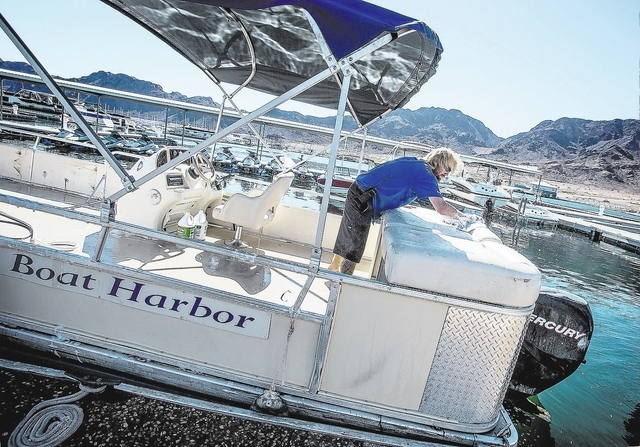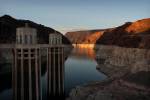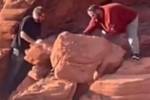Former Lake Mead official recounts the last government shutdown
When the last and longest government shutdown hit in 1995, Alan O’Neill was in his ninth year as superintendent at Lake Mead National Recreation Area.
For 21 days that December, the 1.5 million-acre park east of Las Vegas closed to the public while a skeleton crew of essential employees patrolled the roads and kept the park’s water and sewer systems working.
“It was terrible having to kick people out of the campgrounds,” said O’Neill, who left Lake Mead in 2000 and now works as an advocate and consultant for trails, public lands and eco-tourism. “People would be very, very angry, and they were angry at the Park Service. But the Park Service didn’t have anything to do with shutting down the government.”
It was particularly frustrating for O’Neill, who was forced to watch it all unfold from a distance. Though he was the National Park Service’s top man at Lake Mead, when the shutdown came, he was deemed “nonessential” and sent home.
Depending on how long the latest shutdown lasts, the closure of the park could be even worse this time around because the marinas and tour outfitters generally see brisk business in October, O’Neill said.
Like the park itself, those private contractors were already dealing with the lingering effects of the worst economy since the Great Depression and a drought-fueled drop in the lake’s water level that has required a series of expensive infrastructure projects.
Layoffs have already begun at some of the companies that contract with the Park Service to provide recreation opportunities.
“It’s a major burden on them,” O’Neill said.
The shutdown also poses a law enforcement challenge for federal workers still on the job because it’s virtually impossible to truly close areas as large as Lake Mead or Red Rock Canyon National Conservation Area, which takes in almost 200,000 acres along a state highway less than 30 minutes from the Strip.
“It’s accessible from so many places. I don’t know how you’re going to keep people out of there,” he said.
Back in 1995, Lake Mead opted for what O’Neill called a “soft law enforcement” approach. Basically, they patrolled where they could and politely asked anyone they came across to leave, rather than issuing citations or worse.
“What do you do? It’s a very difficult position to put a law enforcement ranger in,” he said. “They want to encourage people to come to the park, not arrest them for trespassing.”
Avid local hiker and longtime conservationist John Hiatt said it is “an exercise in futility” for government officials to “close” huge swaths of public land at the same time they cut back on the already meager number of employees available to patrol it.
He said the most extreme example is at the Grand Canyon, where people hiking and camping in the park’s remote back country have been given 48 hours to clear out.
“How are they even going to know?” Hiatt said. “You can issue edicts like that, but not only are they unenforceable, they’re stupid.”
O’Neill said he’s hoping for a quick end to the shutdown.
Though he was off work three weeks in 1995, he said it was no vacation for him or any of the other “nonessential” employees at Lake Mead. With no hint of how long the shutdown might last and no money coming in, they couldn’t exactly take a trip out of town.
It’s no different for federal employees caught up this time, O’Neill said.
“It was really hard on the workers. It was painful for them,” he said. “We thought it was going to be a couple of days, and it went on for a couple of weeks.”
Contact reporter Henry Brean at hbrean@reviewjournal.com or 702-383-0350. Follow him, @RefriedBrean, on Twitter.
Government Shutdown
See a roundup of all our coverage:
Everything you need to know about the government shutdown
Nevada Representatives
On each website, click on Contact for locations of offices in Nevada and to send a message.




























